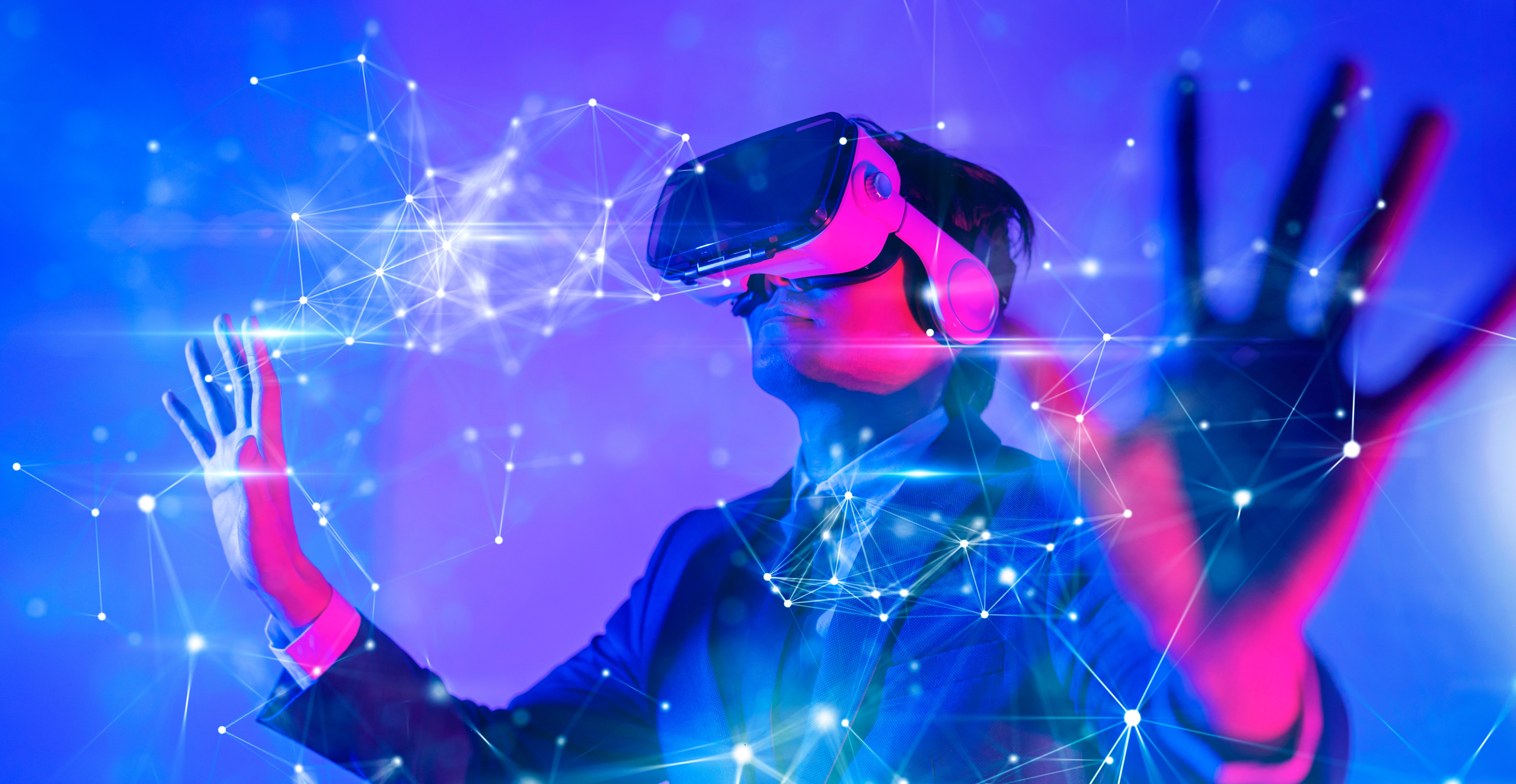Partner ecosystem marketing & the Metaverse – what is the reality?
By Helen Curtis, CEO, Coterie Community, and Tom Wycks, Head of Digital Coterie Marketing
Has the Metaverse kept popping up in conversations? It has for me, and that is not just due to the news headlines. Like anything new and emerging people have polarized views; some are super enthusiastic, some very skeptical, and many sitting on the fence. Not wanting to be in the dark, we gained some help (from technical experts) to gather the facts for our community members and explore the reality of the Metaverse as a helpful platform for ecosystem and partner marketers.
What is the Metaverse?
Let’s start by looking at how people are defining it ¹ :
- It’s an online digital world where users can immerse themselves using virtual reality (VR) or augmented reality (AR).
- Users create avatars that move through a 3D world where they can interact with others and the environment around them. Although some articles state that you don’t need an avatar to interact.
- Facebook (now Meta) describes it as a set of virtual spaces where you can create and explore with other people who aren’t in the same physical space as you. You’ll be able to hang out with friends, work, play, learn, shop, create, and more.
- There is only one Metaverse. It is the total of all publicly accessible virtual worlds, real-time 3D content, and related media connected on an open global network, controlled by none and accessible to all.
- No one owns the Metaverse, but some big players could dominate it.
- Virtual worlds are generally based on open technology, and hardware independent but not all necessarily compatible with each other.
Who is using it today?
The Metaverse has been talked about in science fiction for over 30 years and now we have platforms such as Roblox, Minecraft, and Fortnite that have optional virtual reality interfaces to create increasingly sophisticated online worlds. From online gaming to live entertainment, some say the Metaverse is more than just virtual reality goggle-wearing and playing video games online. It has expanded to include live entertainment, social networks, hardware, user-generated content, and technology infrastructure. There are over 400m active users, and this number is growing every day. The audience is largely skewed toward a younger demographic. Over 50% are aged under 13 and over 80% are aged under 18.
But there are applications to the more mature demographic e.g., in the B2B world, Deloitte has a Metaverse offering called “Unlimited Reality”² which provides both a physical and virtual destination. An innovation space where Deloitte professionals and clients can develop and test breakthrough capabilities that leverage virtual worlds powered by enabling technologies (e.g., AI, blockchain, IoT, AR/VR, 5G).
There are examples in the banking world, such as JP Morgan, which launched a platform called Onyx, a space that displayed a PowerPoint presentation and a picture of their CEO. It wasn’t well received as it lacked any purpose or understanding of the audience that is on there. Quantic Digital Bank is a better example with an ‘outpost’ DJ set, NFT drops, and a lot of content that gradually introduced the younger audience to the concept of banking. Zelf is an example of a brand that has been created by the Metaverse. Zelf is the first bank of the Metaverse, and it is aimed at gamers. Through their research, they identified that gamers growing up on the Metaverse have more value in their digital assets. Zelf is a bank that allows you to look after your digital assets and transfer them for real-world spending.
As you begin to understand the audience on the Metaverse, interesting propositions begin to emerge. It is worth a note of caution, however, if the rise social media or eCommerce popularity has taught us anything, for every Facebook or Twitter, amazon, or eBay there were 100s before them that no longer exist.
What is the commercial opportunity for brands?
As the number of users grows and the opportunity becomes more defined for businesses, the ability to monetize the Metaverse for brands becomes a distinct possibility. There are varying degrees of predictions on the size of the commercial opportunity. JP Morgan has stated that by 2030 the Metaverse will be worth $1 trillion, whilst others feel even this is a conservative estimate. The reality is it is too early to predict, but the numbers provide real excitement.
One thing we do know is brands are already exploring this new landscape and generating significant income from the Metaverse. Samsung launched products, and Hyundai has designed a theme park, where you can design your car. This is aimed at the younger market and raising brand awareness.
On Fortnite, Ariana Grande had a virtual concert on the Metaverse. 78 million people participated over the 2 days. Participants could buy digital merchandise for their avatars to wear, which generated over $20m. When compared to a real-world concert, your overheads are larger, and you couldn’t wish to reach nearly as many people in 2 days. It begins to outline how big the opportunity could be.
What are the limitations?
There are many options, emerging standards, and a few key players with some market share, plus loads of little companies with great ideas. It could end up anywhere, with lots of possibilities but it needs a killer app.
One reservation in the short term is the interface technology; if you have worn a VR headset for 30 mins to an hour, then you know that your face overheats and you can feel very nauseous. Once the headsets catch up then, the possibilities grow.
Today, perhaps the “killer app” is not in the mass market, but niche e.g., two organisations looking at a supply chain flow in a virtual setting.
Longer term if you could go into a VR shop and try on clothes and see yourself as a “real” being in augmented reality before ordering, that would be cool. But this is reliant on the tech being pervasive and the consumers having the headsets.
How could you use it in ecosystem and partner marketing?
I believe it’s possible to create a connected experience or shared space for partners in the Metaverse, I think the key question to address is WHY would they use it over another tech.
Because it’s cool and will bring people to the door but that only lasts for so long, there has to be a tangible benefit for entering the shared space. It’s possible, the question is not “can’t it be done”, but more “what would you do once there”?
How do I get started?
Like with any new venture it is essential to do your research. Understand the audience and apply your product or service appropriately. You must be mindful of your surroundings; the graphics are not realistic and more playful in their appearance. Embrace this rather than work against it.
So in lots of ways, you need to approach this in the same way as any marketing. It is of course early days so our advice would be to treat it more as an R&D exercise and align your success metrics accordingly. There is no doubting the scale of the opportunity and the sooner you and your brand can start to carve out what that means to your company, the more you are likely you will see the returns.
References:
¹ https://medium.com/meta-verses/the-seven-rules-of-the-metaverse-7d4e06fa864c
² https://www2.deloitte.com/us/en/pages/about-deloitte/articles/press-releases/deloitte-launches-unlimited-reality-services.html




